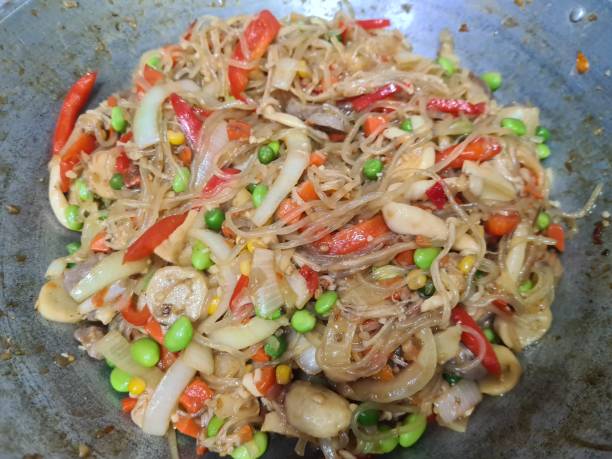Noodles with only some calories per serving could appear too appealing to be accurate. But a bowl of shirataki noodles has approximately the same calories as a cup of broth or a handful of arugula. They are made of an ingredient called glucomannan, which is derived from the konjac root. Glucomannan is an insoluble fiber that takes in a large amount of water. The noodles made of glucomannan are around 3 percent fiber, with 97% being water, making it easy to understand why they’re deficient in calories.
Konjac is a native of the eastern part of Asia. Various names, such as snake and voodoo flower, know the plant. It is a floral scent that resembles carrion. Glucomannan flour is derived from the plant’s roots and can grow to a size of up to 50 pounds. Konjac flour is also used as a thickener in food products.
Health Benefits
Contrary to other healthy food items like shirataki noodles, they do not have a broad range of nutrients. They don’t contain minerals or vitamins unless the manufacturer adds them. Certain manufacturers include small amounts of tofu and other ingredients; however, the nutritional benefits from these additives are usually negligible. As a calorie-free food item, shirataki noodles have certain health benefits:
Diabetes Control
The insoluble fiber in shirataki noodles may slow the body’s rate of absorbing carbohydrates. This could help those with diabetes to stay clear of blood sugar spikes. Studies have proven that glucomannan, a konjac flour found in the shirataki noodles, aids people with diabetes. Patients with diabetes must talk with their doctor before taking glucomannan because it can alter their medications.
Weight Management
Although there aren’t any research studies explicitly focusing on shirataki noodles, high-fiber foods are beneficial to weight management. Because fiber fills you up and fills you up, you can feel fuller longer and consume less. ThoseThose following a ketogenic diet could benefit from shirataki noodles to substitute for high-carb foods. A study of glucomannan, the flour found in shirataki noodles, has revealed that it aids in weight control. However, The most effective results resulted from the combination of glucomannan, an exercise program, and a healthy diet.
Colon Health
A high amount of fiber in your diet benefits well-being by reducing constipation. It helps improve the general function of your bowel, lowering your chances of suffering from hemorrhoids, diverticulitis, and colorectal cancer. The shirataki noodle’s fiber is a soluble fiber, a prebiotic that promotes healthy bacteria growth within the colon.
Nutrition
Since shirataki noodles consist of water and fiber, They contain no vitamins or minerals.
However, they do offer some nutritional value
Nutrients per Serving
A 8-ounce portion (224 grams) is comprised of:
- Calories: 20
- Protein: 0 grams
- Fat Zero grams
- Carbohydrates 6 grams
- Fiber 6 grams
- Sugar Zero grams
Things to Watch Out For
If you’re not used to eating a lot of fiber, you might have gas as well as bloating and loose stool after eating Shirataki noodles. Usually, as you shift to a higher-fiber diet, the symptoms will get better.
A few people who took the glucomannan tablet in solid form have experienced obstructions in their digestive tract because of how glucomannan expands when it is absorbed by water. This is not a problem when eating shirataki noodles since they already have water.
How to Prepare Shirataki Noodles
Shirataki noodles come in familiar forms like angel hair or fettuccini. They can be found as dry noodles or in water. If you select the varieties packed in water, you’ll detect a smell of fish when you open them. The odor is caused by konjac flour. Rinse the water out and drain them thoroughly, and the smell should fade away. Dry types do not smell.
Make the noodles as you would any other pasta, using boiling water to cook them. After draining them, confident cooks prefer drying roast the noodles in a pan to get rid of some water andrm the noodles up.
Since shirataki noodles offer low nutritional value, it’s crucial to mix them with ingredients that provide the most nutrients. You can substitute them with pasta in nearly every recipe. They are great in Asian as well as Italian recipes.

